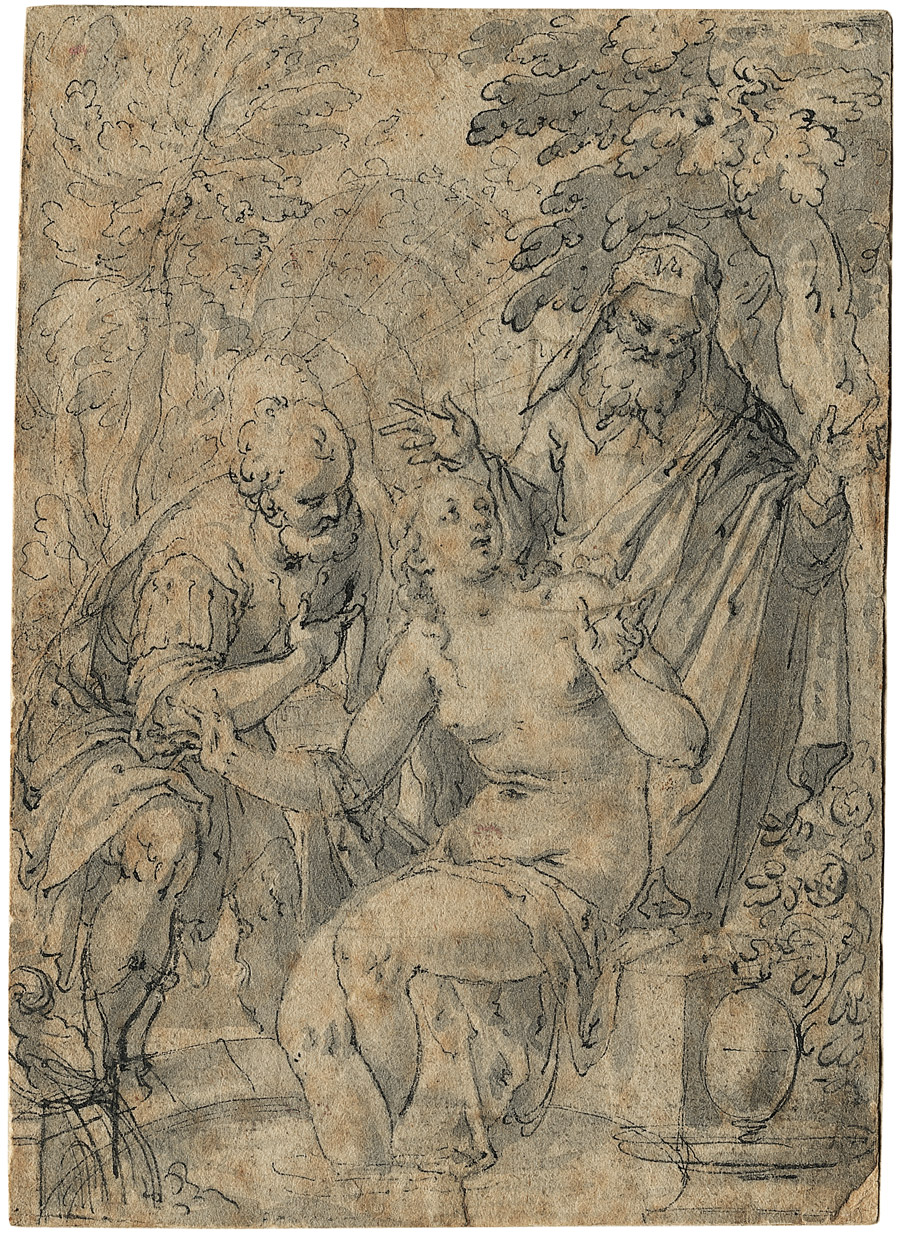Loading the page ...
Friedrich Sustris
(1540 Venice (?) – 1600 Munich)
Susannah and the Elders. Pen and gray ink, gray wash. 12.5 x 8.8 cm. Ca. 1585–1590. Watermark: Cross on three mount in quatrefoil and circle (Briquet 1242: between 1566 and 1594).
Friedrich Sustris was one of the foremost artists in southern Germany in the late 16th century. He received his initial training from his father, the Dutch painter Lambert Sustris, in Venice and Padua. After a stay in Rome he studied under Giorgio Vasari, whom he assisted on works for the Medici in Florence, where he became a member of the Accademia del Disegno in 1564. At the age of 28 he continued his artistic career north of the Alps. Having made a name for himself in southern Germany with extensive commissions in Augsburg and Landshut, he finally acquired a leading position as court artist to Duke Wilhelm V in Munich, where his main duties included the planning and interior appointments of the numerous conversions of, and additions to, the Residenz. The Grottenhof, built between 1582 and 1588, and the Antiquarium, whose construction began in 1586, are still regarded as two of the most amazing buildings of the German Renaissance. A talented and versatile architect, painter, fresco artist and interior designer, Sustris embodied the Renaissance ideal of a universal artist. Like Vasari for the Medici, he played a key role at one of the most influential courts of his day.
Sustris left a considerable drawn œuvre, most of it consisting of works meant as preparatory studies for his buildings, frescoes, sculptures and ephemeral superstructures. Only few of his drawings cannot be connected with specific projects and have to be regarded as autonomous works of art. Our drawing illustrating the Old Testament story of Susannah and the Elders belongs to this category. With fine, nervously vibrating strokes of the pen the draughtsman sets the scene for what is about to happen by placing the three dramatis personae in a lush park landscape. By using a subtle wash in various shades of grey the artist succeeds in vividly presenting the scene unfolding in the restricted setting. The arbour drawn in proper perspective in the background and the delicately sketched stonework of the fountain reflect Sustris’ experience in the field of ephemeral architecture.
As it is stylistically akin to the drafts of paintings destined for the Munich Residenz, Thea Vignau-Wilberg tentatively dates the drawing to the second half of the 1580s. This would place the drawing in the artist’s mature phase, which is confirmed by the flowing and effortless style. It is thus one of the rare works produced by Sustris for a select circle of collectors, who delighted in their shared appreciation of such gems.
